
I’ve been trying to develop gluten-free recipes for a good pizza dough lately, using every available specialty flour I could find at the local health shop. So, here’s my version of a rice flour pizza dough recipe. I knew from the start that I wouldn’t be having any difficulty getting the right mix on this one. After all, I’ve used rice flour a lot, making spring roll wrappers, which should be very similar to making a “flat bread”.

Ingredients
For the Rice Flour Pizza Dough
- 2 Cups White Rice Flour
- 2.25 Teaspoons Active Dry Yeast
- 1 Tablespoon Sugar
- 1/4 Cup olive oil
- 1 Teaspoon Salt
- 1/2-1 Cup Warm Water (as needed)
- 1 Piece Egg
For the Meat Lovers’ Pizza Toppings
- 1/2 Cup Tomato Sauce
- 1/2 Cup BBQ Sauce
- 4-6 Strips bacon cut into inch pieces
- 1 Cup Ground Beef seared in oil
- 1 Piece Bockwurst Sausage sliced
- 1 Cup Mozzarella Cheese torn
Instructions
- Bloom the yeast in a bowl together with warm water, salt, and sugar.
- Sift the rice flour into a large bowl. Make a well in the center and add the egg and olive oil.
- Pour in the active yeast mixture and work the flour into the wet ingredients.
- Turn the dough onto a floured working surface. Knead until smooth and elastic.
- Place the ball of dough into a lightly oiled bowl. Cover with a damp kitchen towel and leave to rise for an hour.
- Set the risen dough into a lightly floured pizza pan. Flatten out evenly with a rolling pin.
- Brush the top of the pizza crust with a little olive oil.
- Bake at 400F for 10 minutes.
- Spread a mix of tomato sauce and bbq sauce on top of the crust.
- Top your pizza with mozzarella, bacon, ground beef, and bockwurst slices.
- Broil for 10-12 minutes at 400F.
 Certain that this flour will give me a workable dough, I decided to add some yeast to try and make it rise (while this recipe was designed for dry yeast, you could tweak the amounts and use fresh yeast instead).
Certain that this flour will give me a workable dough, I decided to add some yeast to try and make it rise (while this recipe was designed for dry yeast, you could tweak the amounts and use fresh yeast instead).
So let’s get started. Leave your yeast to bloom in warm water, together with something it can feed on – salt and sugar. This mix should turn out really foamy otherwise you’ll know that you have to start over again.

Sift the rice flour into a large mixing bowl. Make a well in the center and crack in the egg.
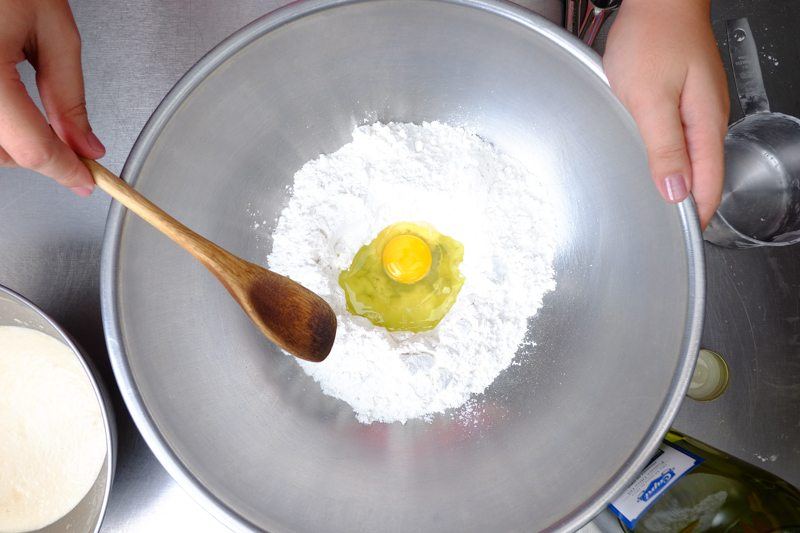
Pour in the olive oil and the active yeast mixture. Mix it with the egg, and slowly work the rice flour in from the sides.
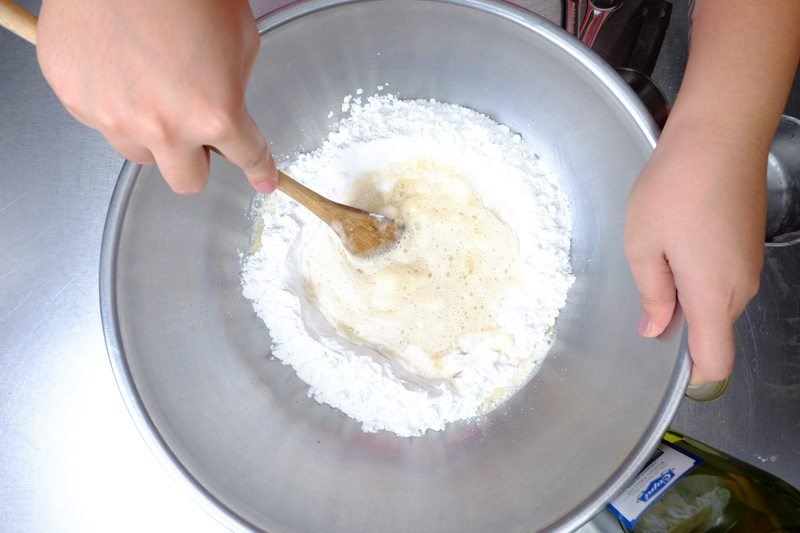
The dough will be very sticky at the beginning and then end up really dry. Just keep mixing until it comes together into a ball.
Then tip this ball onto a lightly floured working counter and begin kneading, sprinkling on more flour if the mixture gets too sticky. You should achieve a smooth dough that is quite elastic but not as much as your typical pizza dough.
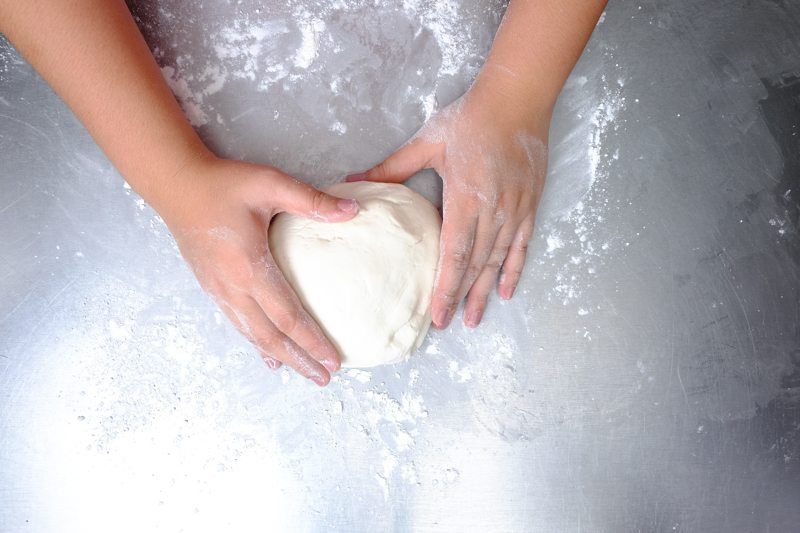
Transfer this ball of dough to a lightly oiled bowl, cover it, and leave it for about an hour to rise.
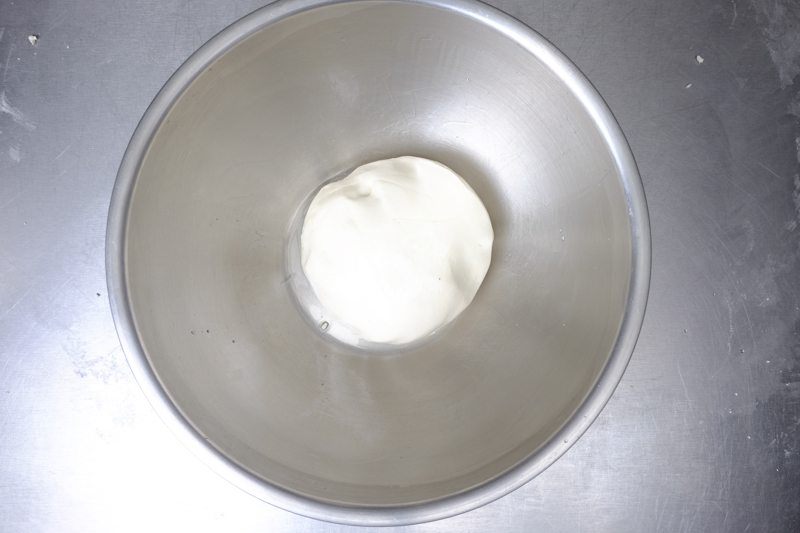
The dough will rise significantly, but not as much by volume as you’d expect from a recipe that uses all-purpose flour.
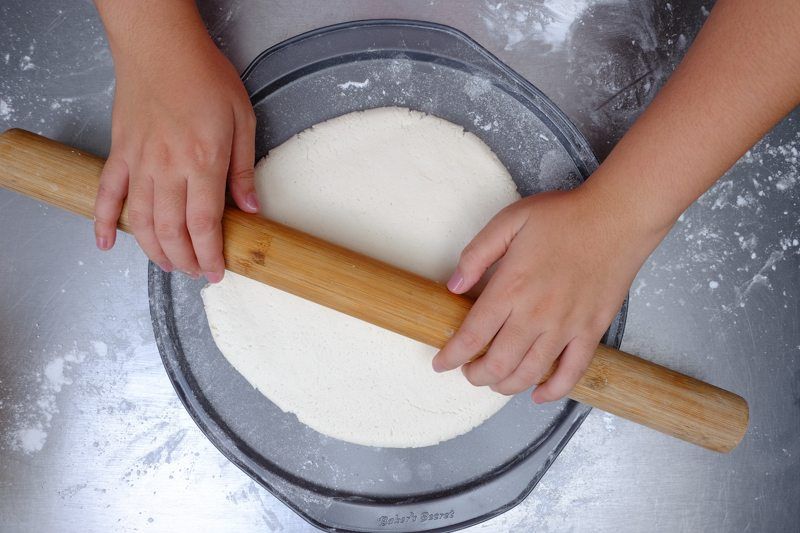
Transfer the dough directly onto a floured pizza pan and roll it out into shape. Brush the top with some oil, and bake it for about 10 minutes at 400°F.
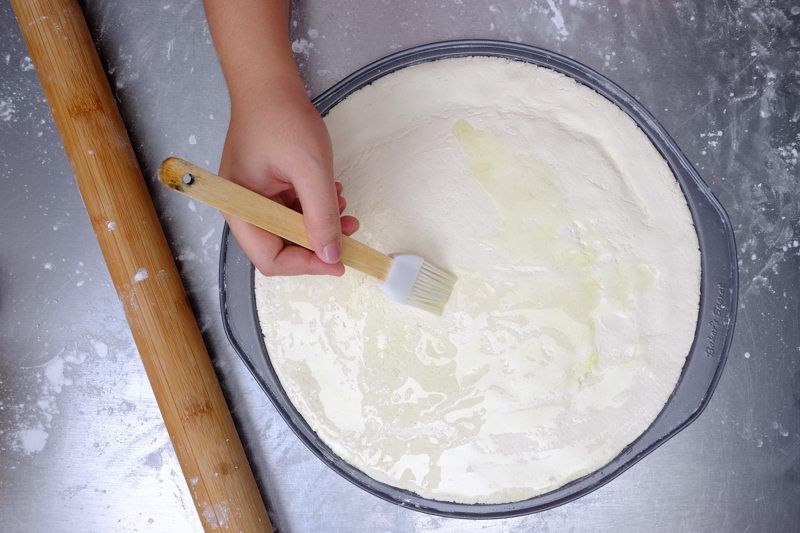
Take your par-baked crust out of the oven then work on topping the pizza.
I just get thinking of a heavy meat dish whenever I hear rice so going for an all-meat pizza came in naturally to my mind. Some bacon slices, some beef mince, and sliced bockwursts sounds good to me. To bring it altogether, I’ve used a 1:1 mix of tomato sauce and BBQ sauce. And, of course, I used mozzarella to complete the pizza without adding any unfamiliar taste. Who wouldn’t miss cheese on a pizza?

Yeast, on top of doing its duty to keeping the crust light and airy, gave that familiar freshly-baked bread flavor to this dough. 
Too much meat for the topping? Perhaps. But, this rice flour pie crust really held up well.

Look at this cross section photo that shows how airy this crust turned out. Going gluten-free ain’t so bad at all.
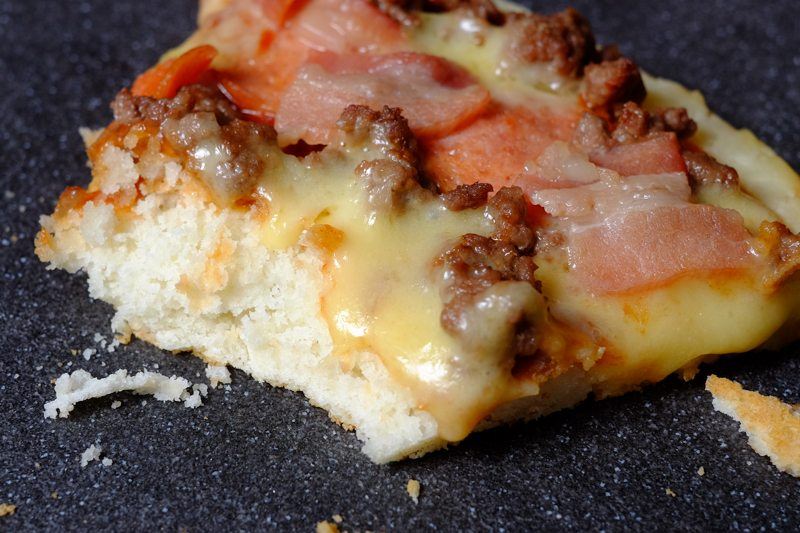
This meaty pizza is so fit for a ‘man’ party. I just don’t know if beer is gluten-free.

Here’s a cool little company… KettlePizza makes a gas and a charcoal grill insert that can turn your Weber charcoal grill or 3-burner gas grill into an outdoor pizza oven. Cook at Neapolitan brick oven pizza temperatures and make awesome pizza at home!
Rice Flour
As you can probably guess, rice flour is quite simply flour that has been made from rice. There are many variations out there, including brown rice flour, black rice flour, and other options. In this case though, the rice flour simply comes from white rice, which is the most common type out there.
The biggest advantage of the flour is simply that it is gluten-free. Additionally, it is a fairly easy-to-find example of gluten-free flour and it is inexpensive to make as well. Because of this, rice flour ends up being perfect for those on a budget.
Get White Rice Flour on Amazon!
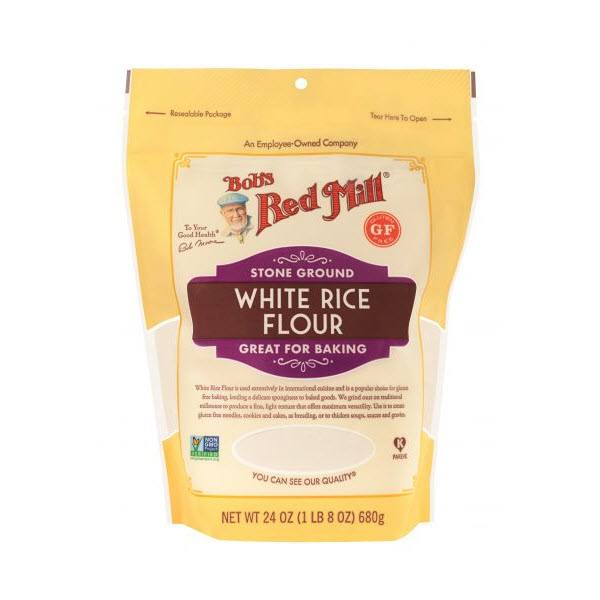
Visually, rice flour also ends up looking very similar to regular wheat flour and this alone is great for baking (or for making pizza dough). Rice flour is most common as an ingredient in noodles and in pancakes, along with acting as a thickening agent for a wide range of different recipes. For example, I used rice flour in my Sous Vide Chinese-Style Fried Chicken dish and it turned out perfectly.
Working With Rice Flour
As with any gluten-free flour, rice flour does present some challenges. For one thing, this type of flour simply doesn’t rise as well as any flour that contains gluten. To get around this, many people focus on smaller loaves of bread or recipes like pizza dough, where the product doesn’t need to rise much.
Still, rice flour does have some advantages as it is fairly light and doesn’t have a distinctive flavor. As such, it isn’t going to alter the flavor of whatever you are making, which is especially relevant for bread.
Unlike some other options, white rice flour can also be used as the only flour in a recipe. This is a major advantage for anybody who doesn’t want to have to keep multiple types of flour on hand.
Health And Diet Implications
When it comes to health, there is considerable debate about rice flour and whether it is actually good for your or not. However, much of the answer comes down to what you are specifically looking for and what your parameters are.
For one thing, rice flour is typically considered healthier than wheat flour, simply because it is gluten-free. At the same time, there are some appealing nutrients in rice, which is another reason to consider rice flour as an option.
But, rice flour is fairly high in carbs. For this reason, some people consider it to be unhealthy and the flour is also avoided by anybody on a keto diet. Likewise, some people argue that rice flour is highly processed, although you can bypass that issue by making your own.
Getting The Best Outcomes From Rice Flour
It’s important to follow your instincts when cooking with rice flour (or any gluten free flour, for that matter), as the flour often won’t behave exactly how you expect.
This is most noticeable with the amount of liquid versus the amount of dry ingredients you need. Sometimes you’ll need much less liquid than the recipe calls for, while other times you’ll need to increase the liquid content instead.
Such inconsistencies don’t mean there’s something wrong with the recipe. Instead, the amount of water you need to add will be influenced by a variety of factors, including humidity and temperature.
Also remember that gluten free pizza dough will have a different consistency than pizza dough made with regular flour. It tends to be stickier than you might expect. Don’t worry, the dough still turns out fantastic once it has been baked.
How To Make Rice Flour
Rice flour is simply ground rice, so you can easily make it at home, rather than buying it from the store. Doing so is easy, but you do need a tool that can crack grains.
Many blenders and mixers will do this but not all. Personally, I tend to use a coffee grinder, which works perfectly for that goal. Bullet style blenders, like the Nutribullet are perfect as well.
All you need to do is pour the grains into the blender/coffee grinder. Pulse it a few times to break up the rice grains, then run the blender at full power for 30 seconds to 60 seconds. Doing so should give you a fine powder.
You can then run this powder through your hands and see what you think about the texture. If it’s too gritty, blend it again for 30 seconds. Keep with this process until you get the consistency you want.
Finally, pass the flour through a strainer. This removes any hard pieces of rice that didn’t grind all the way, giving you a uniform flour to use in your recipes.
For the recipe featured in this post, you’d be using white rice to make your flour. However, you can also make pizza dough using brown rice flour.
Regardless of whether you make or buy it, rice flour may not be the healthiest gluten-free flour on the market but it does still offer many benefits. If nothing else, it is a fairly easy to access flour that also works well in a range of recipes.
Substitutes For Rice Flour
If you don’t have rice flour at home or don’t like it, no worries, there are plenty of rice flour substitutes. The best one to use depends on the recipe and the outcomes you want.
- All purpose flour. Rice flour is often used instead of regular flour in recipes. So it stands to reason you can use regular flour instead of rice flour. Of course, all purpose flour isn’t helpful if you’re avoiding gluten.
- Cornstarch. Cornstarch is a particularly useful substitution if you need to thicken a meal or for deep frying. It’s also naturally gluten free.
- Almond flour. This flour works well for many recipes too, including pizza. It has a slight nutty flavor, but the nuttiness isn’t too overwhelming.
- Gluten free baking flour. You can also buy gluten free baking flour mixes at local stores. These normally include multiple types of gluten free flour and often behave better in recipes than a single type of gluten free flour.
- Coconut flour. Coconut flour is a popular alternative, as it’s much lower in carbs than rice flour. You’ll normally just need half a cup of coconut flour for every cup of rice flour. However, you may need to play around with the liquid in your recipe too, as coconut flour absorbs more liquid than rice flour.

Ingredients
For the Rice Flour Pizza Dough
- 2 Cups White Rice Flour
- 2.25 Teaspoons Active Dry Yeast
- 1 Tablespoon Sugar
- 1/4 Cup olive oil
- 1 Teaspoon Salt
- 1/2-1 Cup Warm Water (as needed)
- 1 Piece Egg
For the Meat Lovers’ Pizza Toppings
- 1/2 Cup Tomato Sauce
- 1/2 Cup BBQ Sauce
- 4-6 Strips bacon cut into inch pieces
- 1 Cup Ground Beef seared in oil
- 1 Piece Bockwurst Sausage sliced
- 1 Cup Mozzarella Cheese torn
Instructions
- Bloom the yeast in a bowl together with warm water, salt, and sugar.
- Sift the rice flour into a large bowl. Make a well in the center and add the egg and olive oil.
- Pour in the active yeast mixture and work the flour into the wet ingredients.
- Turn the dough onto a floured working surface. Knead until smooth and elastic.
- Place the ball of dough into a lightly oiled bowl. Cover with a damp kitchen towel and leave to rise for an hour.
- Set the risen dough into a lightly floured pizza pan. Flatten out evenly with a rolling pin.
- Brush the top of the pizza crust with a little olive oil.
- Bake at 400F for 10 minutes.
- Spread a mix of tomato sauce and bbq sauce on top of the crust.
- Top your pizza with mozzarella, bacon, ground beef, and bockwurst slices.
- Broil for 10-12 minutes at 400F.


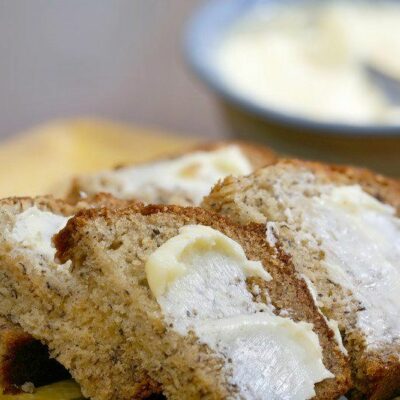







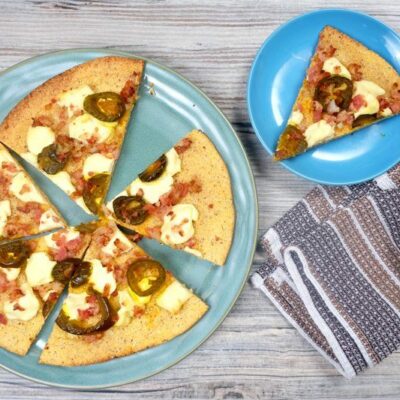

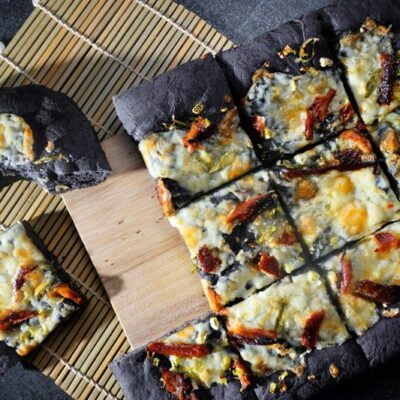
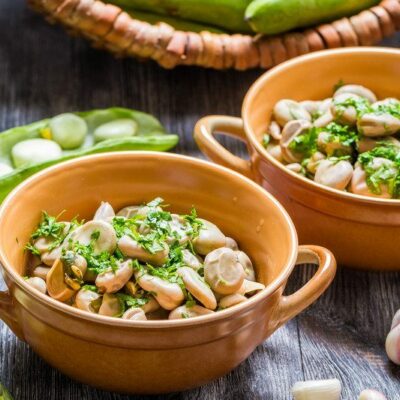




 Colombian Style Pork Belly Recipe
Colombian Style Pork Belly Recipe
Looks fabulous. Going to try this week on pizza night, thanks for testing it out for me 😉
The quantities seem to be way off. Using the exact amounts written results in a dough with a consistency of a thick muffin dough.
Working with non-gluten flours can be tricky. You can add extra water and oil as you feel necessary!
I just tried the recipe and i had to add about another cup of rice flour to get it to a ball
Don’t think I’ll be making this again. The batter was too thin even after adding one more cup of flour. I tried to go ahead and bake, but it totally crumbled apart.
Are you sure you added the right amount of water?
Totally followed recipe….really wanted this to work…
Perhaps where you live is more humid or dry. I’m not really sure where the mismatch in results are. You can see from the photos that it worked out for me!
Can this dough be made ahead of time and placed in the fridge before baking?
I haven’t tried that yet. Try it and let us know how it goes!
The dough was really sticky to start with as well as even adding 1 extra cup of rice flour but once laid out in the pan and brushed with olive oil and pre-baked, it turned out really really crispy and delicious!
Definitely making this again. I added a photo to the pinned recipe on Pinterest.
Nice! Thanks for letting us know your experience Bridget! Typically, these doughs are quite sticky, and don’t get “unsticky” like a typical pizza dough will. However, once baked, they are crispy and (almost) tasty like regular dough.
Thanks a lot for the recipe. I adjusted the water to get the required consistency of the dough. Used maple syrup instead of sugar to bloom the yeast. Flavour was nice, but texture was quite crumbly. I was very happy to have made a gluten-free pizza from scratch though! Next time I will add another egg for more binding and see how it turns out.
Why is my crust so crumbly? What do I do if the dough keeps cracking? Where did I do wrong?
Water additions may vary based on your location and desired texture. Keep in mind, the dough will not be springy or stretchy like doughs which contain gluten. It’s very much more like play-dough when you roll it out.
I’ve been baking french baguettes for 5 years. I’ve learned that at least half of the time store bought yeast produced commercially is half dead by the time you use it, or worse. I now make my own yeast and it’s always very active. You should proof all store-bought yeast to see how alive it is. You won’t get the necessary bulk ferment raise unless the yeast proof raises to about double volume. Anything less than double volume is no good; you are wasting your time. Double to triple volume raise is required.